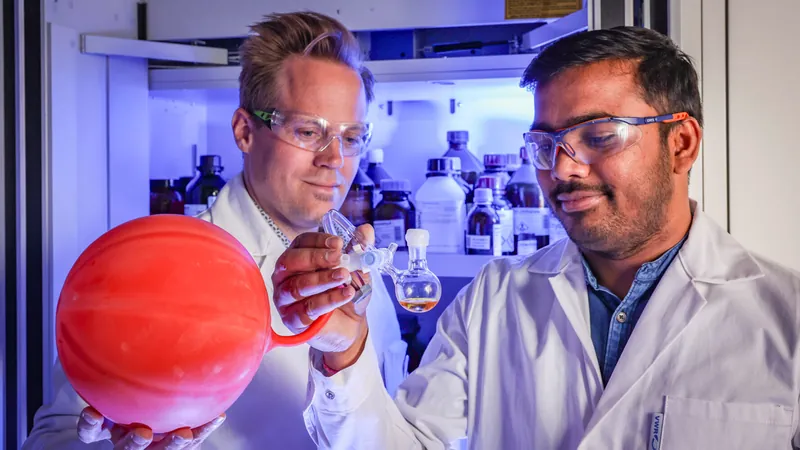
Revolutionary Copper Catalyst Unlocks New Possibilities in Biologically Active Compound Labeling
2025-05-12
Author: Jia
Breakthrough in Copper Catalysis
In an exciting development showcased in the Journal of the American Chemical Society, researchers from Chemnitz University of Technology, led by Prof. Dr. Johannes Teichert, in collaboration with Prof. Dr. Fabian Dielmann’s team from the University of Innsbruck, have unveiled a groundbreaking bifunctional copper catalyst.
A Catalyst Like No Other!
This innovative copper-based catalyst is a game-changer, consisting of two distinct components that work together to facilitate the hydrogenation of various molecules. Essentially, it activates and transfers molecular hydrogen (H2) with surprising efficiency.
Teichert explained that traditionally, activating hydrogen required high pressures, restricting the practicality of the reaction. However, this new bifunctional design employs an additional component, an iminopyridine, which dramatically enhances the copper's reactivity, allowing the process to occur at a much lower pressure of just 1 bar. This means that laboratories worldwide can now utilize it with ease.
Transforming the Unreactive!
One of the most impressive features of this new catalyst is its ability to convert previously unreactive functional groups found in various molecules, particularly enamides. These groups are often key components in biologically active substances due to their stability. The copper catalyst now enables their hydrogenation under mild conditions, showcasing the potential for modifying a range of medicinal compounds.
Isotope Labeling: A New Frontier
Furthermore, this breakthrough opens doors for isotope labeling using deuterium instead of standard hydrogen. This technique is crucial for deepening our understanding of biological processes and is especially valuable for studying the degradation of biologically active compounds. Teichert noted, "This strategy not only diversifies known active substances but also makes groundbreaking research into biological activities possible."
Collaboration Across Borders
This landmark work is a testament to international scientific collaboration, merging expertise from different institutions. Teichert shared, "This hybrid catalyst exceeded our expectations in terms of activity," highlighting the synergy of these cross-border partnerships.
Future Prospects in Research
The insights gained from this research lay the groundwork for further projects within the EU research network CATALOOP, spearheaded by Teichert. One primary focus will be on exploring the aforementioned labeling experiments in greater depth.
As the scientific community eagerly anticipates the implications of this research, it is evident that this new bifunctional copper catalyst could significantly impact the fields of medicinal chemistry and biological research.



 Brasil (PT)
Brasil (PT)
 Canada (EN)
Canada (EN)
 Chile (ES)
Chile (ES)
 Česko (CS)
Česko (CS)
 대한민국 (KO)
대한민국 (KO)
 España (ES)
España (ES)
 France (FR)
France (FR)
 Hong Kong (EN)
Hong Kong (EN)
 Italia (IT)
Italia (IT)
 日本 (JA)
日本 (JA)
 Magyarország (HU)
Magyarország (HU)
 Norge (NO)
Norge (NO)
 Polska (PL)
Polska (PL)
 Schweiz (DE)
Schweiz (DE)
 Singapore (EN)
Singapore (EN)
 Sverige (SV)
Sverige (SV)
 Suomi (FI)
Suomi (FI)
 Türkiye (TR)
Türkiye (TR)
 الإمارات العربية المتحدة (AR)
الإمارات العربية المتحدة (AR)